This article was published in the 185th issue of The Universe Space Tech magazine. Its author is Oleksandra Ivanova, Doctor of Sciences in Physics and Mathematics, Senior Research Scientist at the Laboratory of Solar System Small Bodies Physics of the Main Astronomical Observatory of the National Academy of Sciences of Ukraine, Senior Research Scientist at the Department of Interplanetary Matter of the Astronomical Institute of the Slovak Academy of Sciences.
While people started observing celestial bodies mostly out of pure curiosity, exploring the Earth has always made a lot of practical sense. However, penetrating its interior has proven to be a much more complex process than studying distant stars. We are still only theoretically familiar with many aspects of its internal structure. It is even more difficult to conduct such studies on other planets. So what do we know about them so far and what does this knowledge tell us?
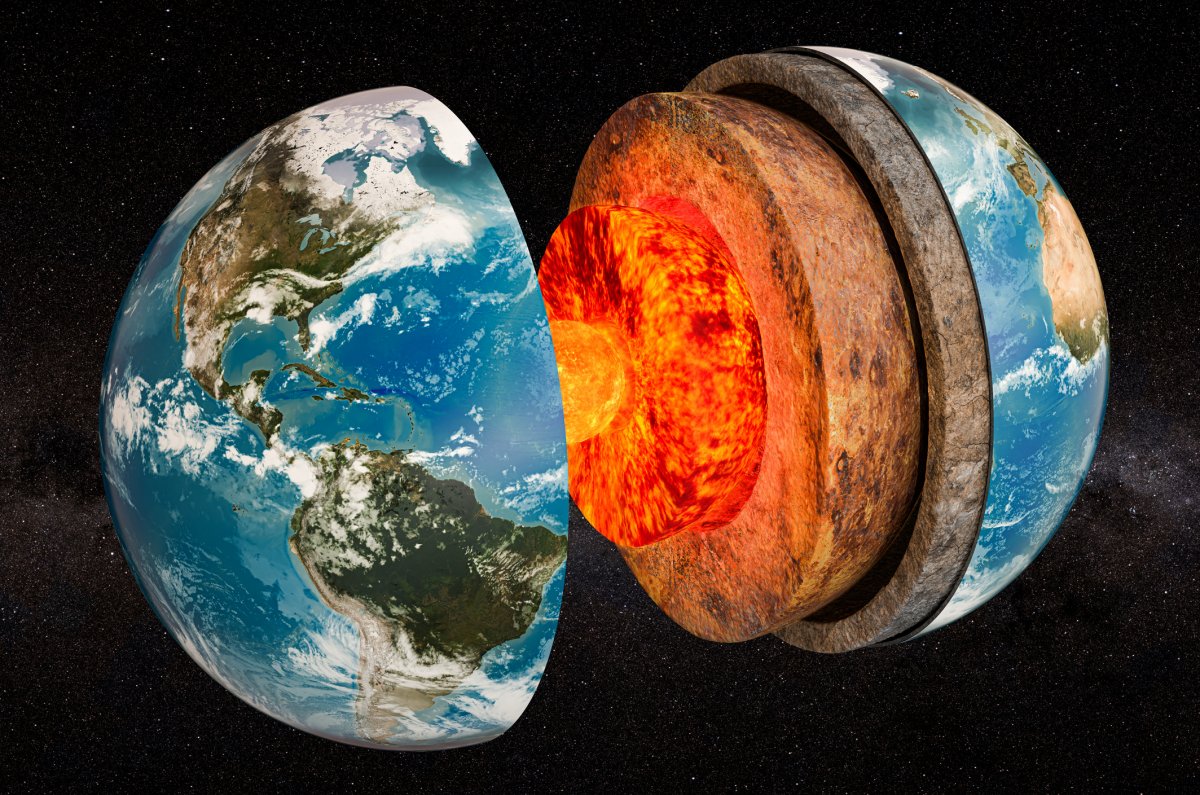
The study of the internal structure of the planets of the Solar System is closely related to the study of their evolution. The process of planet formation from a gas and dust cloud is a long one, and for each body, the duration of this process depended on its mass and size. For obvious reasons, most of our knowledge is about the internal composition of our own planet — the Earth. Seismic observations of the heat flow from the interior, as well as measurements of gravitational and magnetic fields, helped us to do this. We also take into account the geological characteristics of the surface, which may reflect traces of internal (endogenous) processes. Laboratory experiments related to the physics of high pressures and temperatures also play an important role in obtaining information about the state of matter in the planetary interior.
Scientists have always tried to extrapolate the data obtained and the patterns found to other objects in the Solar System. But the real breakthrough in planetary science came when automatic research probes were sent to neighbouring planets. Many of them have already made soft landings on the surfaces of the Moon, Venus, Mars, several small asteroids and the Saturnian moon Titan.
We now know that the large planets are divided into two groups according to their physical properties (and vicinity to the Sun). The four closest to the Sun — Mercury, Venus, Earth and Mars — are the terrestrial planets, while the rest — Jupiter, Saturn, Uranus and Neptune — are the giant planets. They differ in size, surface condition and average density. This difference is due to the temperature increase in the protoplanetary disc as it approached the central luminary, near which the least volatile components with high density could be preserved as solid particles.
Planets of the Earth group
As already mentioned, we know most about the composition and structure of the Earth’s interior. From a physical and chemical point of view, it is believed to have two components: a silicate shell (or mantle) and a metallic core. The Earth’s crust is of secondary origin — it was “separated” from the shell in the early stages of evolution as a result of gravitational differentiation, when light components “floated” and heavy components sank to the core.
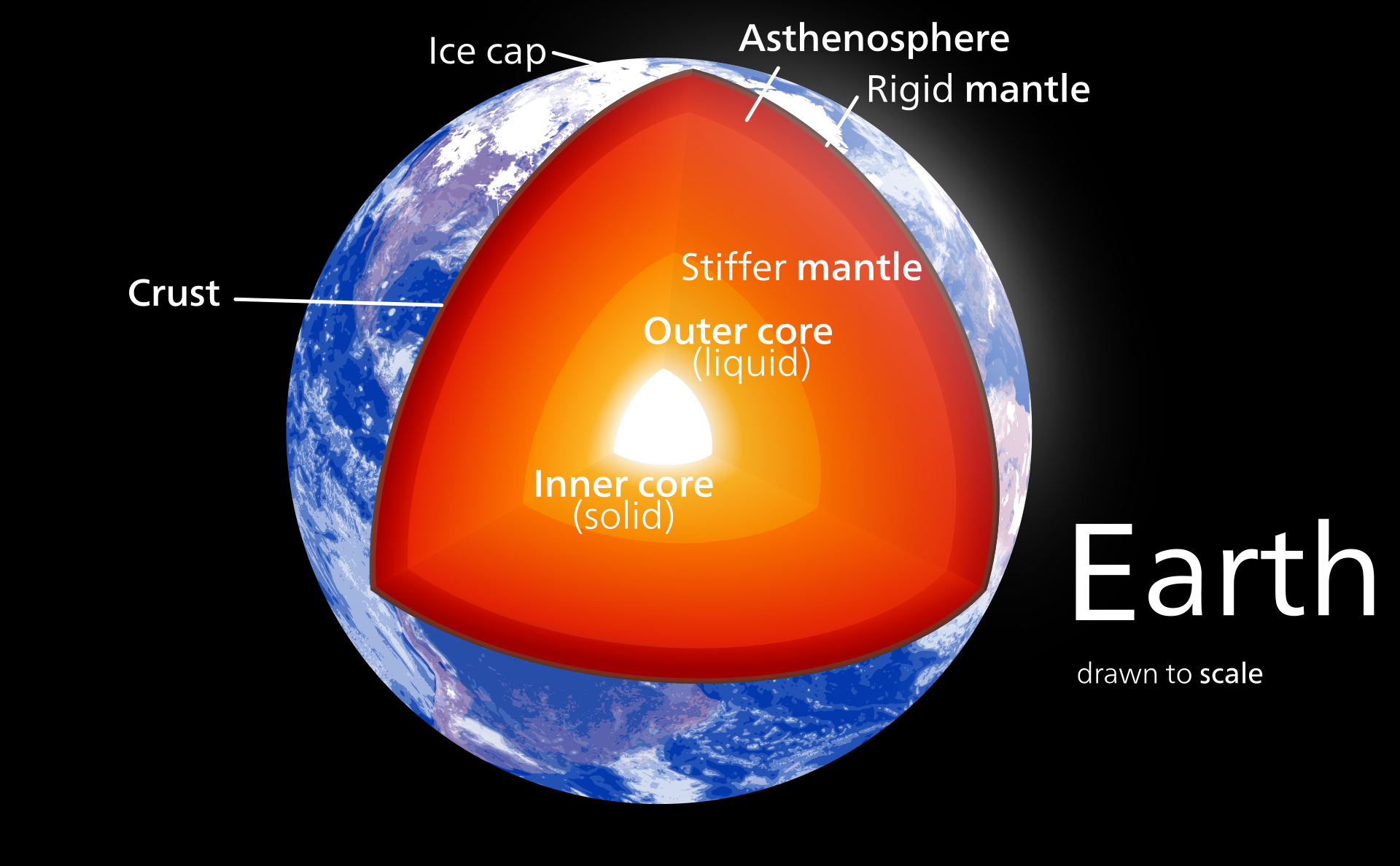
Beneath the continents, the Earth’s crust extends to a depth of almost 40 km, forming a thin outer layer on the planet’s scale. The continental crust is composed of lightweight material (mostly granite), while the oceanic crust is 2-3 times thinner and is dominated by basalts. The mantle extends from the crust to a depth of 2900 km and constitutes almost 80% of the Earth’s volume. The silicate mantle is solid, but on geological time scales it behaves like a viscous fluid.
Below the mantle is a liquid outer core consisting of iron contaminated with light substances (carbon, oxygen, silicon and sulphur), and in the centre is a solid inner core of iron-nickel alloy. It is contaminated with heavy metals.
Of all the planets outside the Earth, the internal structure of Mars is best understood. According to current knowledge, its crust is 50-100 km thick and consists of one large tectonic plate (unlike the Earth’s crust, where there are many such plates and their movement is an important part of planetary evolution). Some researchers do not rule out that plate tectonics did take place in the early stages of Martian history — more than 4 billion years ago. The core of Mars is in a liquid state due to the fact that the iron and nickel it consists of contain a significant amount of sulphur. Its radius is half the radius of the planet itself. In 2019-2023, the InSight lander conducted seismic experiments on the Martian surface.
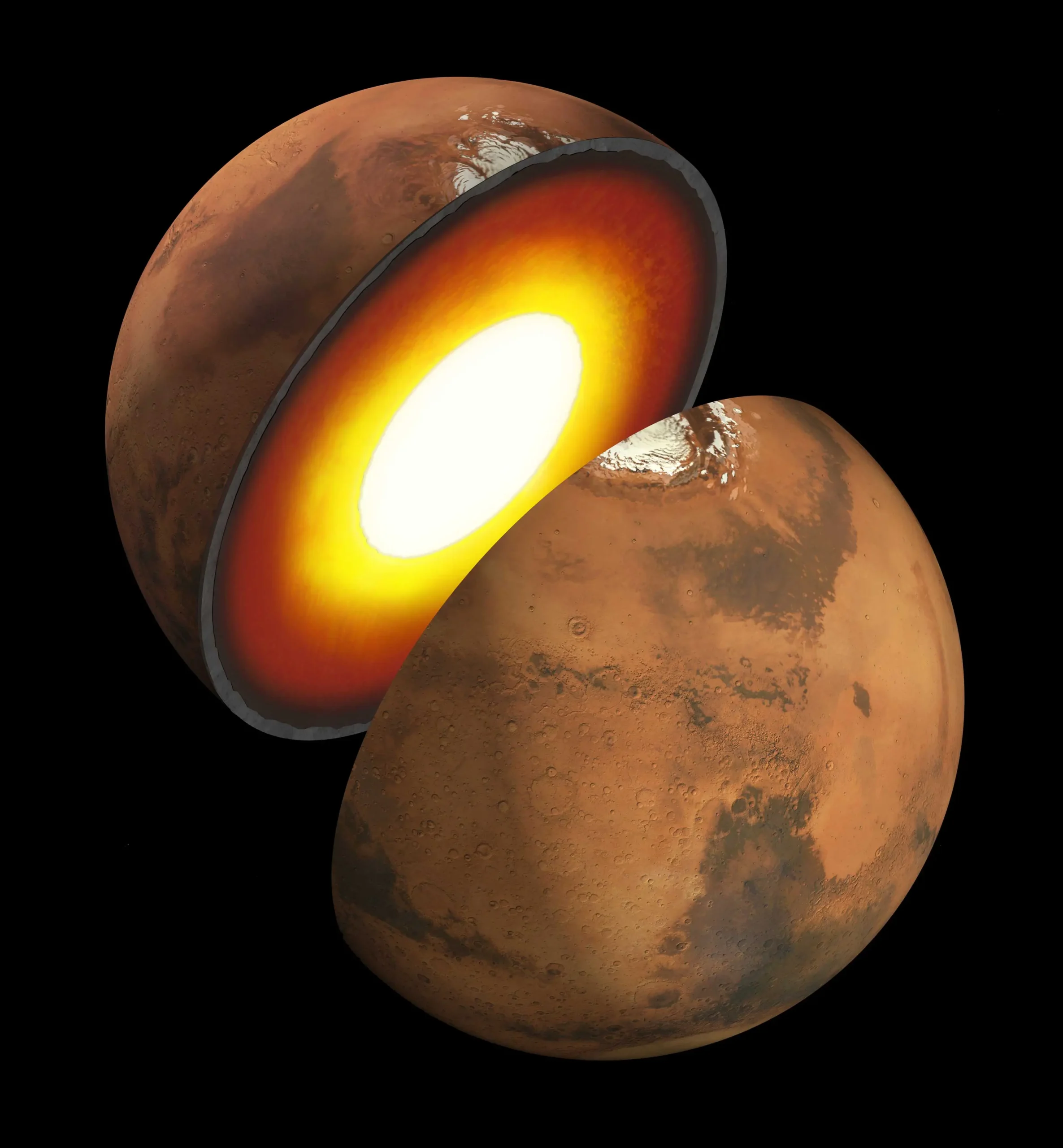
Another planet of the Earth group, Venus, is very similar to the Earth in terms of its parameters (radius, average density). It also has a liquid iron core, but due to its low rotation speed, it has no magnetic field. There are no traces of global plate tectonics, and the most significant difference is the relatively young age of the rocks on the Venusian surface. Radar surveys have revealed clear signs of volcanic activity on the surface.
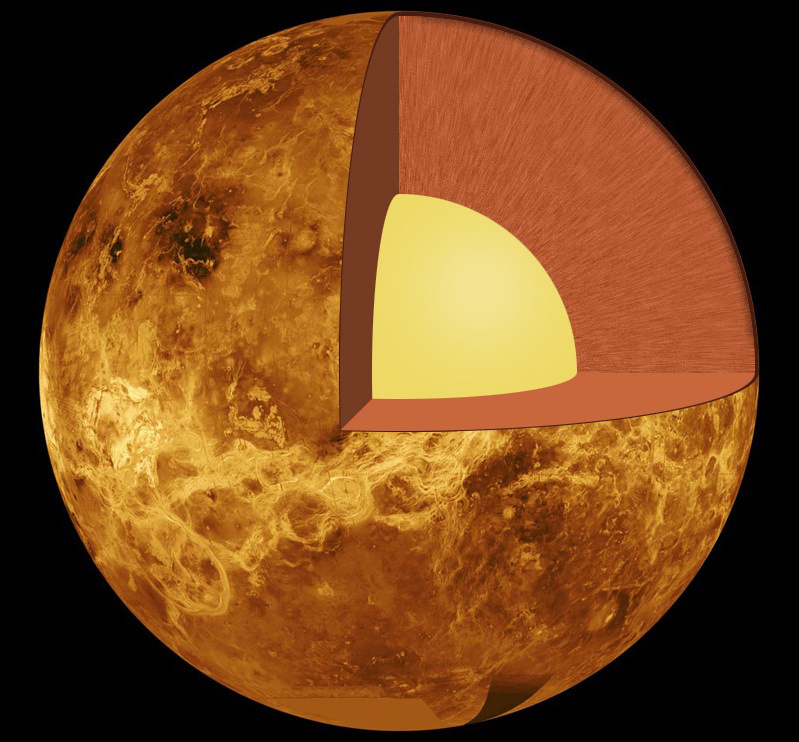
Unfortunately, due to the high temperature (approximately 500°C) and pressure near the surface (over 90 bar), the technical conditions for seismic experiments on Venus are very difficult: none of the existing instruments can work there for more than two hours. Therefore, an alternative methodology is being developed to record signals and study activity in the Venusian atmosphere associated with seismic processes in the planet’s interior.
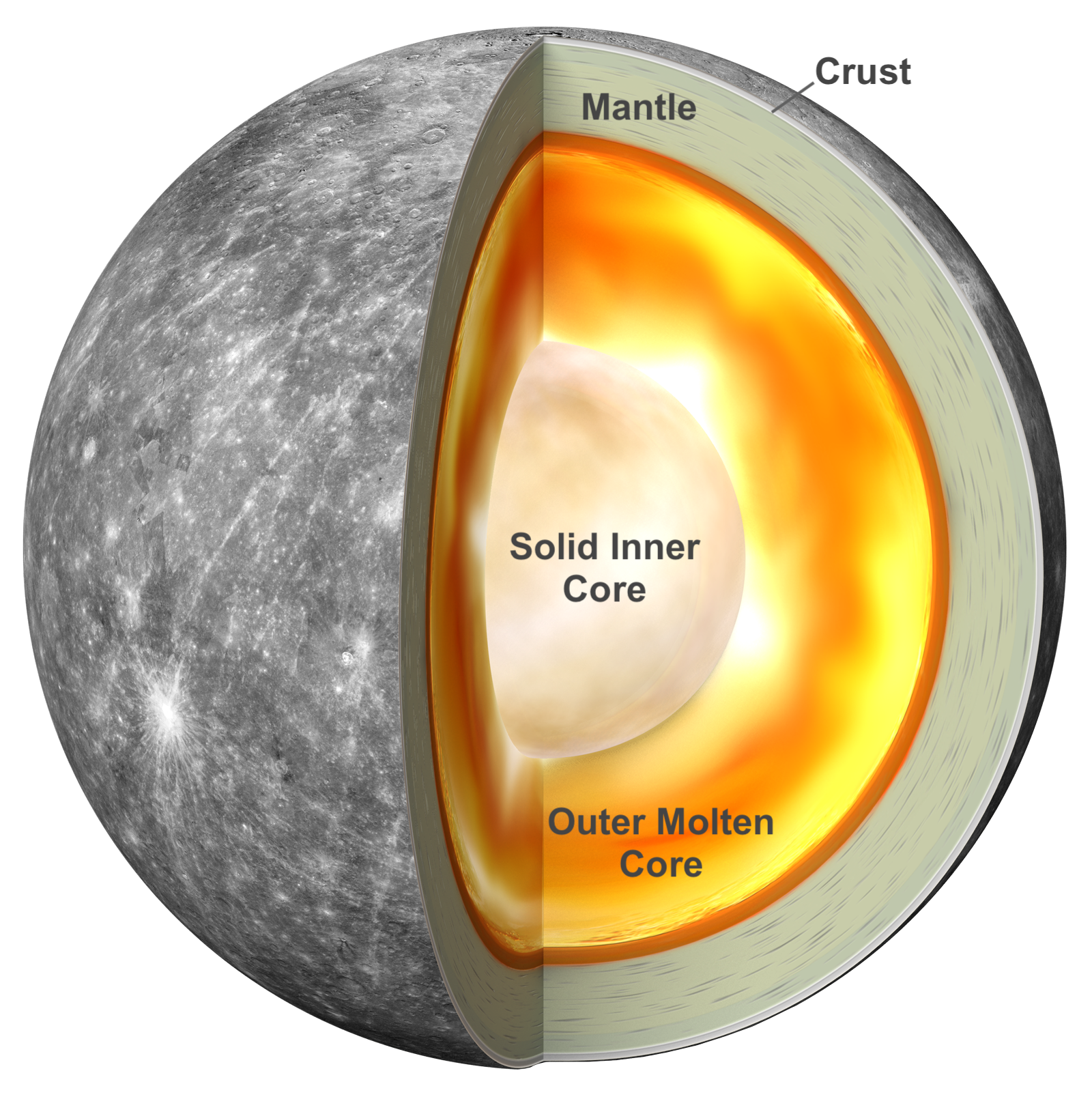
The internal structure of Mercury. Source: NASA
Mercury, the smallest and closest planet to the Sun, is the worst-studied planet of the Earth group. It has no atmosphere, its crust is 50 km thick, and its iron-nickel core occupies about ¾ of the planet’s radius and is surrounded by a 400 km thick silicate mantle. Unlike Venus, Mercury has a global magnetic field. It is believed to be formed by the principle of a hydromagnetic dynamo (like the Earth’s) — due to the circulation of matter in the liquid core.
Gas and ice giants
Giant planets were formed at a distance from the Sun where its heat did not actively evaporate volatile chemical compounds, so they consist mainly of helium and hydrogen contaminated with water, methane and ammonia. All of them have a much lower average density than the planets of the Earth group (the “record holder” in this indicator is Saturn with a density of 0.687 g/cm3, which is less than water). In the early stages of evolution, these objects grew quite rapidly due to the ice component, which allowed them not only to absorb a large mass of gas from their area of space, but also to “retain” the hydrogen-helium component. As a result, almost all of the planetary mass and most of the momentum of the Solar System were concentrated in them.
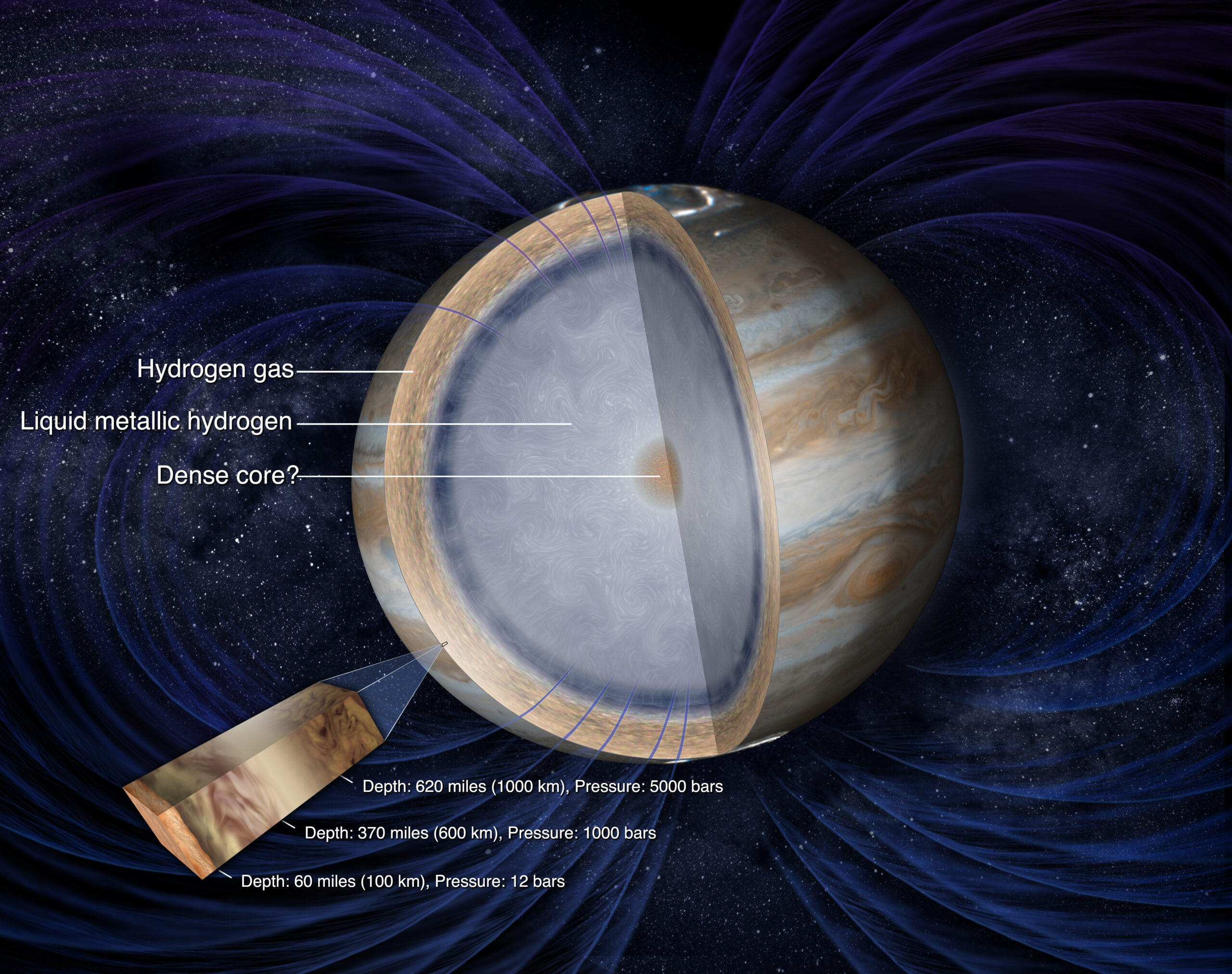
The internal structure of Jupiter. Source: NASA/JPL-Caltech
Due to the enormous mass of giant planets, their interior is heated by gravitational compression. Among them, there are two subgroups: Jupiter and Saturn are predominantly hydrogen planets, while Uranus and Neptune contain large amounts of water ice (hence they are often called ice giants). On average, Jupiter is 80% gas — hydrogen, helium, neon, methane, and carbon monoxide. Approximately 15% is accounted for by the ice component (water, ammonia, carbon dioxide), and the remaining 5% is the silicate component (iron, nickel, oxides of iron, magnesium, calcium, aluminium, etc.) composing a metal and stone core. Saturn has a slightly smaller gas component and a larger ice component: 70% and 23%, respectively. It also contains more metals and silicates. Scientists believe that the Jovian and Saturnian cores are surrounded by a layer of exotic substance — the so-called metallic hydrogen. It is under incredibly high pressure and is a conductor of electric current, which is why the two largest planets have powerful magnetic fields.
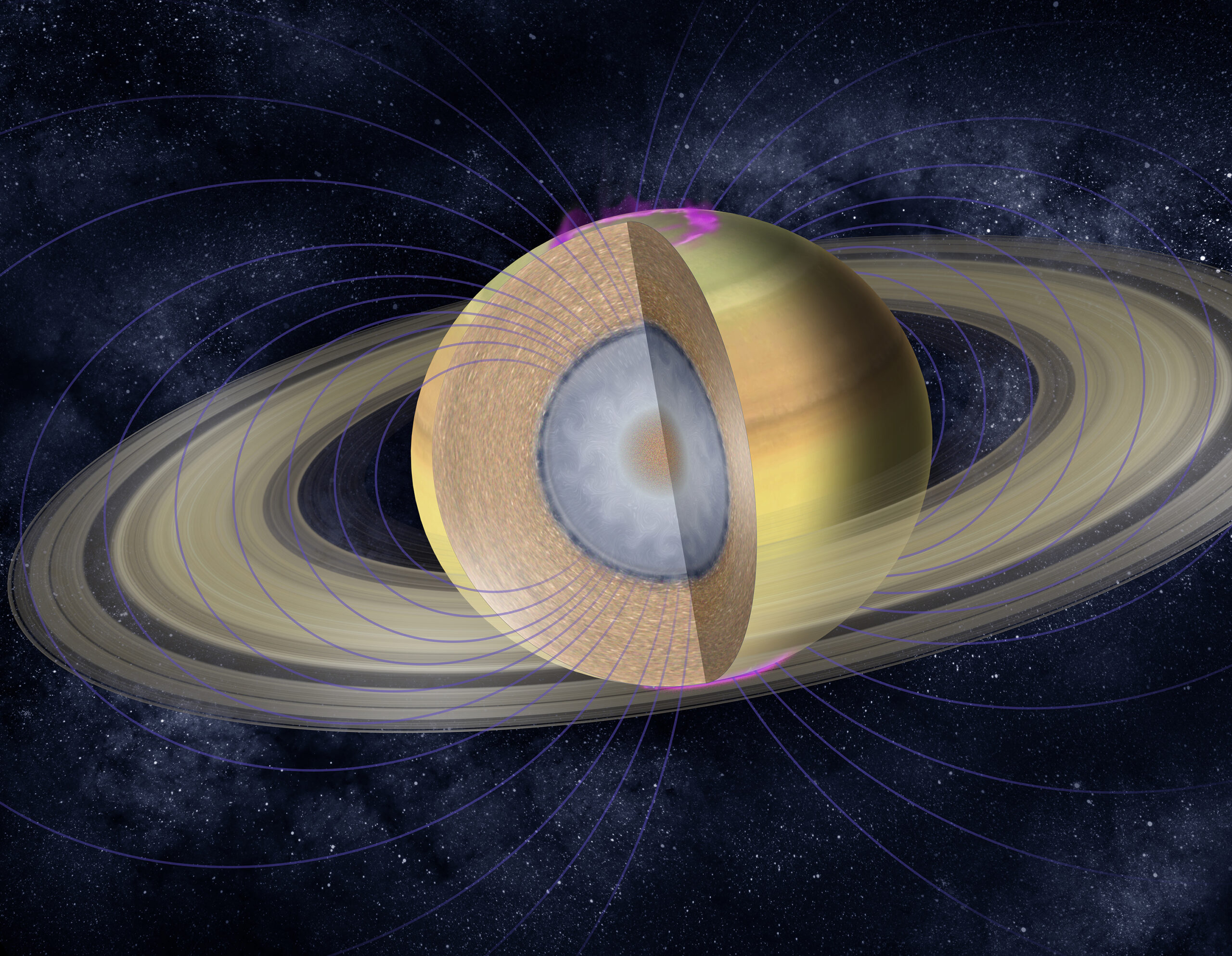
It is now known that the atmosphere of Jupiter and Saturn has a lower content of helium compared to the Sun, which led scientists to the conclusion that this element is differentiated and has a two-layer core, with the outer layer significantly enriched in helium. Recent studies by the Cassini spacecraft, based on the analysis of oscillations in Saturn’s rings caused by fluctuations in the planet’s gravitational field, have allowed for more accurate estimates of the size and mass of its core. It turned out that its radius could be almost 60% of the gas giant’s radius, with a third of its mass made up of rocks and ice. Uranus and Neptune have an increased ice component; silicate rocks are the second most abundant.
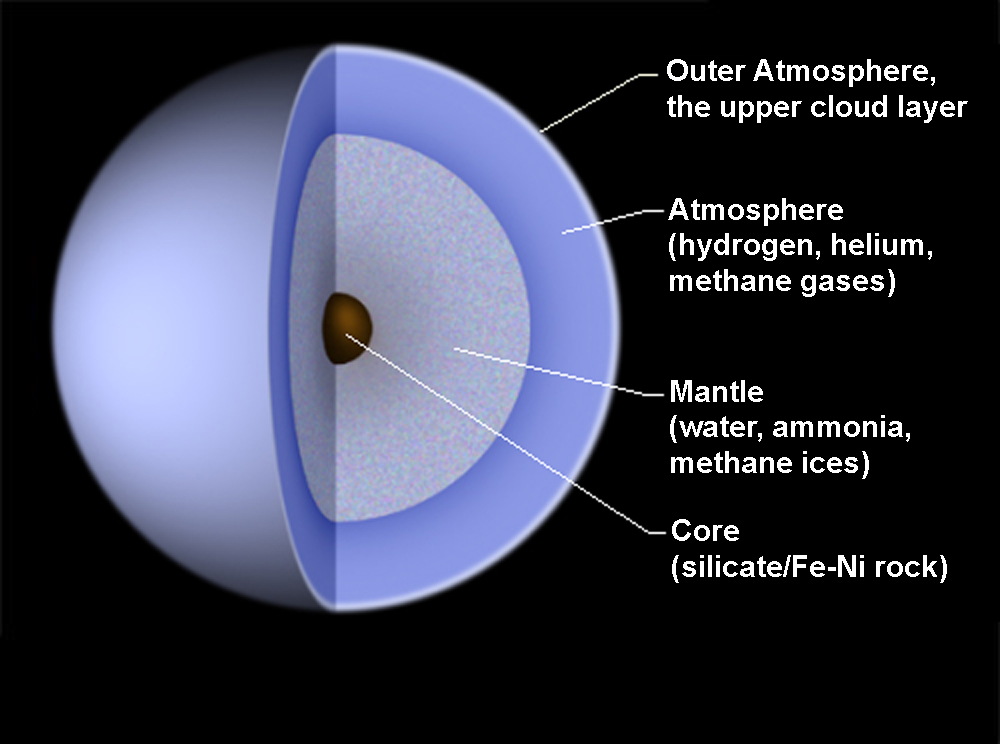
On giant planets, hydrogen is in so-called beyond-critical conditions. As it’і deeper level, the gas atmosphere gradually condenses under the pressure of higher layers and, without a clear boundary, turns into a liquid — relatively dense state without forming a classical “surface”. It is worth noting that the most precise models of the internal structure of these planets are obtained by studying their gravitational fields. Meanwhile, the results of the experiments are strongly influenced by atmospheric processes, which makes it almost impossible to measure the mass and size of the cores of Jupiter and Saturn with high accuracy (not to mention Uranus and Neptune).
* * *
As you can see, the planets of the Solar System are a complex conglomerate of solid matter, liquids, gases and electromagnetic fields, the composition and structure of which strongly depend on the conditions of formation of a particular body in the protoplanetary disc more than 4.5 billion years ago. Despite the significant achievements of planetary science, there are still many open questions that may be answered by new space missions and data on the characteristics of planets in other star systems. Although the theory of star formation and the formation of protoplanetary discs was developed long ago, today, due to the advances in astronomy, astrophysics and astronautics, we are beginning to better understand the details of these processes, which give us the key to the structure of the guts of our Earth and other planets.

